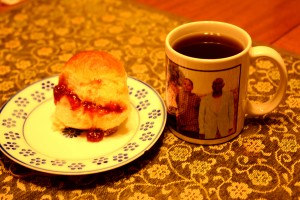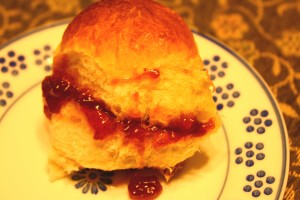by
Mwizenge S. Tembo, Ph. D.
Professor of Sociology
It has always occurred to me that parents create lasting warm memories through the wonderful things they do for their families and especially children during the Christmas season. When these children grow to be adults, they will often return home during the holidays to re-experience that magic. I do not know whether I can ever re-experience my special childhood Christmas magic.
We were a family of nine in a rural village in Zambia in Africa. My father was a primary school teacher who earned a modest twenty kwacha or dollars per month in the early 1960s. How did he and my mother make us all happy at Christmas? Of course some of the food like maize for nshima, beans, and peanuts we grew on land just behind our house. How did my father manage to buy one small gift for each one of us at Christmas? He saved and planned ingenious layaways for the whole year with the local Indian (from India) shopkeeper at Mgubudu Stores. Each of the six girls and mother got an inexpensive dress sewn by local tailor. Designer clothes were out of the question. The boys usually got either a pair of shorts or a shirt.
One Christmas at the old age of eight, my father bought me my first pair of shoes. When I saw them, I thought I had died and gone to heaven. I put them to my nose to smell them. They smelt new. Everybody had a big laugh because I did not know which shoe went on the right or left foot. Like a good mom, my mother teased me about my scrubbing my feet really good so that my razor sharp calluses did not put holes in the new shoes. She had a point because there were no socks with the shoes. A pair of socks would have been too expensive.
The most exciting and memorable part of Christmas day in our family was the food. The day before Christmas, my father would buy a loaf of bread, rice, onion, Tiger Oates and a special spice called chikasu. Early in the morning on Christmas day, a chicken was slaughtered. My mother diced the onions and sautéed them in oil with the chikasu spice. The aroma wafted from the kitchen. The smell was so good that it could have killed several starving and emaciated men. We kids would all hang around the kitchen our nostrils sniffing the air around us. Mother would tease us asking what we were hanging around the kitchen for. Why didn’t we go and play outside, say about a mile away? She needed elbow room in the kitchen, she would say. She would have this special beam and smirk on her face that said a thousand words that she was happy on this special day.
After church at noon, we would have a large family feast; rice and chicken both cooked with the special chikasu spice, cake my sisters baked using recipes from their domestic science classes at Kanyanga Girls boarding school. In the afternoon, dressed in whatever best new piece of clothing each of us had, we went to Christmas festivities including a variety of African traditional dances like vinyau, chitelele, and cimtali in the villages.
One memorable Christmas incident surrounds the African village tradition of not wasting any food. When a chicken is slaughtered, for example, everything is used except for the feathers. Children clean and roast the intestines and the head and eat them as a snack ahead of the main meal. This was often seen as a preliminary reward for the children for performing the hard and exhausting task of chasing the chicken through the village before it was apprehended. We boys always looked forward to amusing ourselves by using the chicken’s stomach as a soccer ball. We would clean the inside, inflate it and tie it. We would usually get a good game of chifyawo football going. One Christmas day, my brother and I had just inflated the chicken stomach and kicked the “ball” about a hundred meters ahead of us in the village square. We sprinted after it. Six to ten chickens began to also chase the thing. This was not unusual. But from nowhere, our family dog furiously charged the “ball” amidst our screams to “stop!!!”. The village dog knows a good meal when he sees one. He disappeared into the bush with the “ball”. He reappeared later licking his chops.




